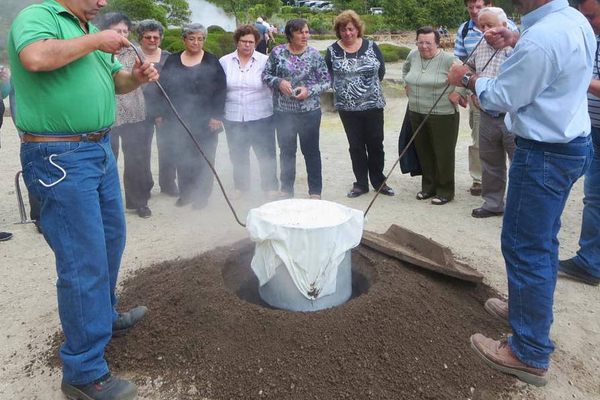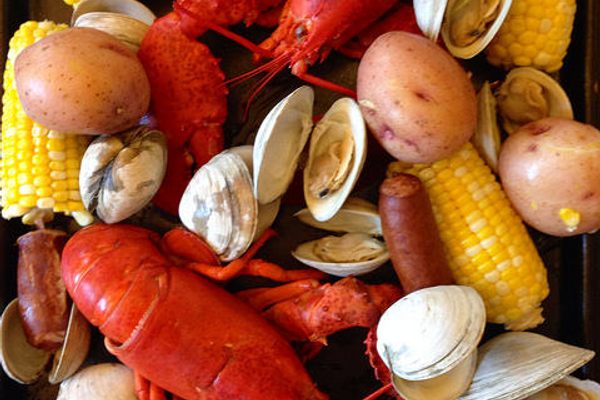The Māori people landed on the shores of New Zealand between 1250 and 1330, likely hailing from Central Eastern Polynesia. With them came a method of underground cooking known as hāngi.
This traditional fire pit technique requires digging a large hole, placing stones in the bottom, and lighting a fire. Early hāngi-masters used the heat-retaining stones to cook food that they’d foraged and hunted around the island. They set raw starches (or kai, a term that now simply means “food”) and meat atop the stones, then covered the lot in foliage and soil to keep steam inside. Around three hours later, large groups feasted on tender, smoked meat and produce that emanated an earthy, almost ashen aroma. In areas of New Zealand rife with geothermal activity, such as Rotorua, a region now known for adventure sports and Māori culture, cooks employed natural springs to heat their stones. Modern Māori villages in Rotorua still use the natural geothermal landscape to cook these meals.
Historically, the Māori people roasted fish, shellfish, chicken, or turtle alongside banana, sweet potato, and other starches in the hāngi. Today, hāngi-masters also include pork, lamb, pumpkin, cabbage, and stuffing. Rather than cover ingredients in foliage, cooks rely on cloth, aluminum foil, and wire baskets. Other 21st-century interpretations of hāngī include aluminum containers of prepackaged kai. High-end chefs in New Zealand have also used hāngi techniques to prepare epicurean feasts in honor of events such as the Māori New Year.
Where to Try It
-
Whakarewarewa
17 Tryon Street, Whakarewarewa Village, New ZealandLocated in the geothermal landscape of Te Whakarewarewa Valley, this Māori village welcomes visitors for hāngi, performances, and demonstrations. Open 8.30am – 5.00pm.
Written By
 rachelrummel
rachelrummel
Sources
- www.newzealand.com/us/feature/maori-hangi/
- media.newzealand.com/en/story-ideas/maori-hangi-a-real-taste-of-culture/
- theculturetrip.com/pacific/new-zealand/articles/a-brief-history-of-the-maori-hangi/
- teara.govt.nz/en/history/page-1
- www.livescience.com/60086-maori-site-earliest-polynesian-settlement.html

















